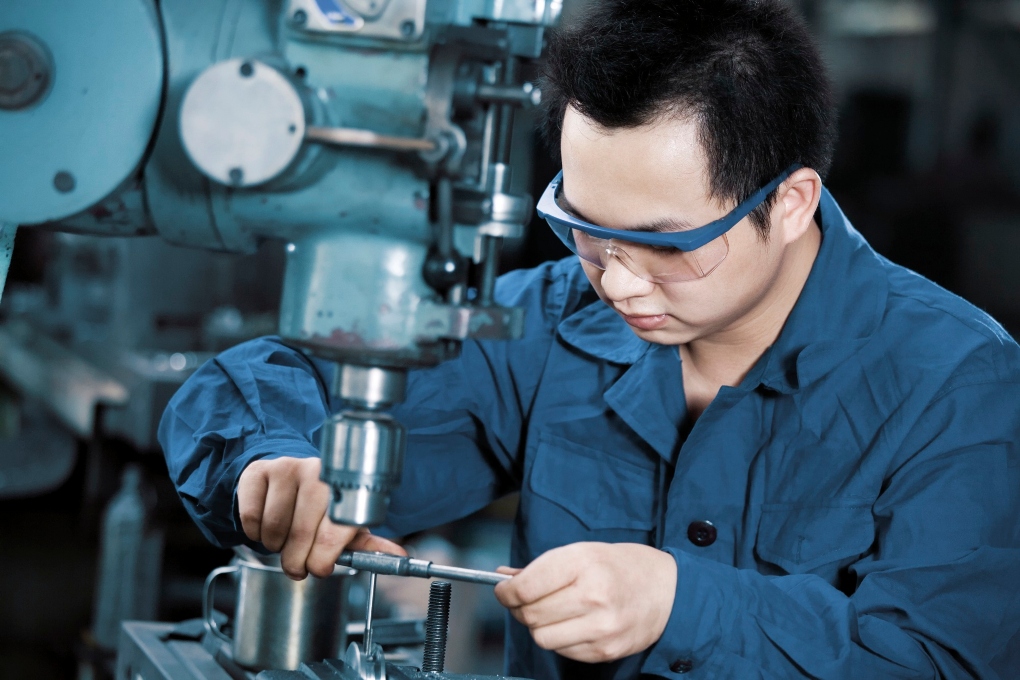The Inside Story of Manufacturing & Operations in China

For almost thirty years the phrase ‘Made in China’ has been analogous with the low-cost manufacture of consumer goods. From shoes to cell phones, from refrigerators to air conditioners, thanks to its inexpensive labour and vast governmental assistance, Mainland China has been very much considered the world’s factory. Times, however, are changing, and for this new age the phrase has received an upgrade: ‘Made in China 2025.’
Taking inspiration from Germany’s ‘Industry 4.0’ strategy, Made in China 2025 (MIC 2025) is an initiative to comprehensively upgrade Chinese manufacturing, shifting the focus from consumer goods towards high-tech areas of industrial robots, aerospace and automation by way of heavy investments in research innovation and government subsidies.
This transformation is having a profound effect on how Chinese manufacturing is perceived overseas. Whereas previously foreign organisations looked to invest in Mainland China’s manufacturing and operations (M&O) sector due to low labour and operational costs, companies now recognise the possibilities inherent in the new Chinese model. Understanding that the nation is on the cusp of actualising its desire to move from mechanical drive to electrical and software control, foreign companies are as a result investing in engineering and research and development (R&D) centres. The foreign powers who have traditionally operated in this high-tech space are taking notice.
“[Made in China 2025 is] a very, very serious challenge, not just to us, but to Europe, Japan and the global trading system,” said U.S. Trade Representative Robert Lighthizer. “They want to be on top of all the high-tech, all the cutting-edge economic areas. And it’s smart for them to do it.”
While the advantages of MIC 2025 are obvious in advancing Mainland China’s desire to become a high-income economy, it also provides opportunities for companies to reduce costs, as manufacturing moves away from a labour-heavy space towards a higher reliance on automation and IoT, an increasing concern as salaries rise.
In 2017 many Chinese provinces raised their wage minimums, something that, according to Zhao Yang, chief Mainland China economist at Nomura International in Hong Kong, is “guided by the top leadership’s emphasis on poverty alleviation and sharing more of the fruit of growth with the disadvantaged.” However, the costs of these rising wages, in some instances equalling or bettering some areas of Europe, are being passed on to manufacturing companies, and to alleviate this they are turning to operations departments to cut costs, with the use of Six Sigma and lean practices especially prevalent.
However, this does not mean that Trade Representative Lighthizer has overstated concerns of Mainland China’s ability to compete with American high-tech industry. Mainland China’s manufacturing market share is growing in a number of areas as companies invest heavily in product development and domestic and international M&A activity. These ventures were prominent through 2017, and have continued to be so this year, though recent months have seen a slight slowdown in M&A following the heightening of the recent trade war with the U.S.
This robust activity is having a dramatic effect in how Mainland China’s M&O sector is being implemented and is driving a desire to locate candidates for a number of areas. From R&D managers with electrical or software engineering backgrounds, to automation engineers, to lean and Six Sigma engineers, there is a battle to acquire the top talent that will enable organisations to improve in the MIC 2025 era.
Unfortunately, companies are finding these areas candidate short, forcing them to adopt a number of tactics to fill talent gaps. One strategy is to look internally to existing employees who may have abilities that can be adapted through upskilling, and in the areas of automation and Six Sigma, these positions are regularly filled by employees from engineering or process engineering departments.
While this may be an initially cost-efficient way to locate talent, many companies are proving impatient. As sales teams cannot always be relied upon to increase profits, companies are pressing operational areas to make savings by placing lean engineers as quickly as possible, meaning that they are more likely to hire directly than take the time required to train existing staff.
In these instances, companies regularly turn to recruitment companies such as Hays to source highly skilled candidates, and those experienced in the famed Toyota Production System are top of manufacturing companies’ wish lists, whether they are automotive manufacturing firms or first tier suppliers. If these optimal candidates are not available, companies desperate to fill roles are showing flexibility to those who may not quite meet requirements but have similar skills or experience in comparable roles.
In R&D and engineering sectors companies are looking further afield, with even domestic organisations interested in candidates from overseas should they have the skillsets required to assist in product development. Elsewhere, however, localisation is very much the key, as there is an understanding that, with 20 years of repeatedly upgraded experience to mine within the Chinese manufacturing industry, the talent in the area is sufficient to not require costly overseas hires, and there is a trend for foreign employees already at companies being returned and replaced with local candidates.
With a strong and stable market, there are plenty of opportunities to exploit. Even if candidates are not considering new opportunities in the immediacy, it is a good time to appraise options, with salary increases of between 10 and 20 per cent available. When this is combined with the chance to progress careers and manage larger teams, candidates are in positions of strength in these exciting and fast-changing times.
If you would like to discuss this report in more depth or you wish to discuss your job search or recruitment needs,please email our consultants.
East China:
Vic Zhao, Manager, Manufacturing & Operations, Hays Suzhou Vic.Zhao@hays.cn
South China:
Cece Tang, Team Manager, Manufacturing & Operations, Hays Guangzhou Cece.Tang@hays.cn
Hays research
Hays Workforce Trends In 2024: Accountancy and Finance
China’s Technology Talent Trends for 2024
DNA series
